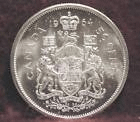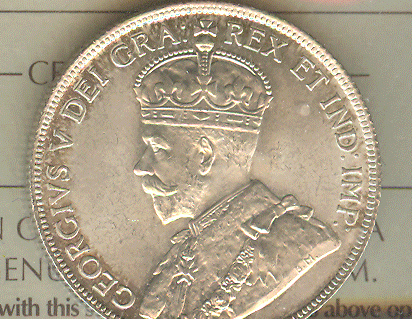NEWFOUNDLAND COINS
NEWFOUNDLAND COINS
We are often asked what is the rarest Newfoundland coin. It is in fact whats called a 1871 mule 10 cents, which means it has an obverse of a Newfoundland 10 cent piece and a reverse of a 1871 Canadian 10 cent. If you can find one we’ll pay you upwards of $100,000.
Remember, each year thousands of Newfoundland coins are melted for their silver content and many thousands more are sold to the lucrative tourist market through type sets (1 cent – 50 cents). The supply of Newfoundland coins is undoubtedly drying up which means as supply decreases, it is reasonable to expect prices to continue to rise. Are you up to the challenge (only major varieties listed)?
NEWFOUNDLAND COIN CHECKLIST
Scarce Coins highlighted in yellow
Very Scarce coins highlighted in green
|
NFLD Large and Small Cents
|
Newfoundland 5 Cents
|
Newfoundland 10 Cents
|
Newfoundland 20 Cents
|
Newfoundland 50 Cents
|
Newfoundland $2 Gold
|
|
O 1865
|
O 1865
|
O 1865
|
O 1865
|
O 1870
|
O 1865
|
|
O 1872
|
O 1870
|
O 1870
|
O 1870
|
O 1872
|
O 1870
|
|
O 1873
|
O 1872
|
O 1870 Dot
|
O 1872
|
O 1873
|
O 1870 Dot
|
|
O 1876
|
O 1873
|
O 1872
|
O 1873
|
O 1874
|
O 1872
|
|
O 1880
|
O 1873H
|
O 1873
|
O 1876
|
O 1876
|
O 1880
|
|
O 1880(oval 0)
|
O 1876
|
O 1876
|
O 1880
|
O 1880
|
O 1881
|
|
O 1885
|
O 1880
|
O 1880
|
O 1881
|
O 1881
|
O 1882
|
|
O 1888
|
O 1881
|
O 1882
|
O 1882
|
O 1882
|
O 1885
|
|
O 1890
|
O 1882
|
O 1885
|
O 1885
|
O 1885
|
O 1888
|
|
O 1894
|
O 1885
|
O 1888
|
O 1888
|
O 1888
|
|
|
O 1896
|
O 1888
|
O 1890
|
O 1890
|
O 1894
|
|
|
O 1904
|
O 1890
|
O 1894
|
O 1894
|
O 1896
|
|
|
O 1907
|
O 1894
|
O 1896
|
O 1896 Lg 96
|
O 1898
|
|
|
O 1909
|
O 1896
|
O 1903
|
O 1896 Sm 96
|
O 1899 N 9
|
|
|
O 1913
|
O 1903
|
O 1904
|
O 1899 Hook
|
O 1899 W 9
|
|
|
O 1917
|
O 1904
|
O 1912
|
O 1899
|
O 1900
|
|
|
O 1919
|
O 1908
|
O 1917
|
O 1900
|
O 1904
|
|
|
O 1920
|
O 1912
|
O 1919
|
O 1904
|
O 1907
|
|
|
O 1929
|
O 1917
|
O 1938
|
O 1912
|
O 1908
|
|
|
O 1936
|
O 1919
|
O 1940
|
Newfoundland 25 cents
|
O 1909
|
|
|
O 1938
|
O 1929
|
O 1940 RE
|
O 1917
|
O 1911
|
|
|
O 1940
|
O 1938
|
O 1941
|
O 1919
|
O 1917
|
|
|
O 1941
|
O 1940
|
O 1942
|
|
O 1918
|
|
|
O 1942
|
O 1941
|
O 1943
|
|
O 1919
|
|
|
O 1943
|
O 1942
|
O 1944
|
|
|
|
|
O 1944
|
O 1943
|
O 1945
|
|
|
|
|
O 1947
|
O 1944
|
O 1946
|
|
|
|
|
|
O 1945
|
O 1947
|
|
|
|
|
|
O 1946
|
|
|
|
|
| O 1947 |










